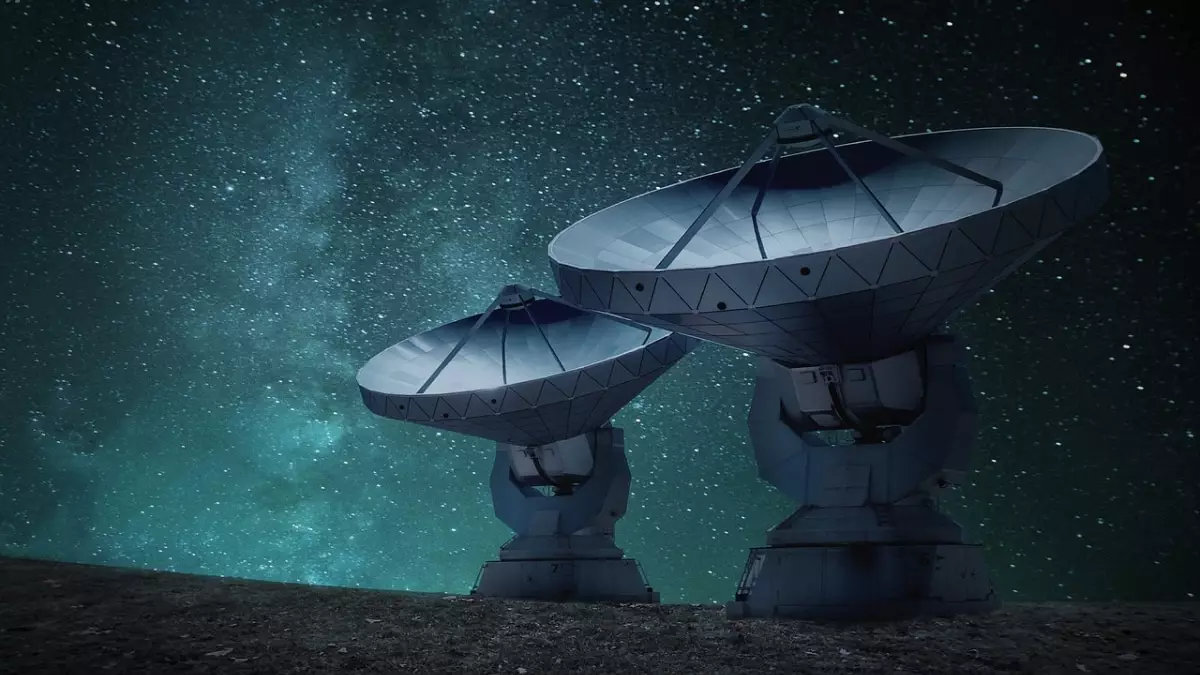The rise of Elon Musk’s Starlink constellation is a double-edged sword; while it seeks to provide global internet coverage, its increasing presence in Earth’s orbit poses unprecedented challenges for astronomers. The Netherlands Institute for Radio Astronomy (ASTRON) has raised alarms regarding the detrimental effects of the numerous Starlink satellites on radio astronomy. As these satellites proliferate, with projections suggesting over 100,000 by 2030, their interference with vital astrophysical signals raises critical concerns about the future of space research.
Radio telescopes, essential instruments for capturing faint signals from the universe, are gradually becoming ineffective due to the disruptive noise from Starlink’s satellites. According to Professor Jessica Dempsey of ASTRON, the second-generation satellites (V2) produce electromagnetic radiation up to 32 times stronger than earlier models. This escalation in interference not only amplifies noise but also significantly obscures the weak signals astronomers depend on to study phenomena that lie millions of light-years beyond our own galaxy. Such obstructions are not merely inconvenient; they threaten the very foundation of ongoing and future astronomical research.
Cees Bassa, one of the researchers investigating the Starlink phenomenon, provides a telling analogy: the radiation emitted by these satellites rivals the brightness of the full Moon, drowning out the faint stars that scientists strive to observe. This comparison aptly encapsulates the challenge astronomers face; the very equipment designed to gaze into the cosmos is rendered less effective under the bright glare of technological advancement. Such parallels illustrate the delicate balance between progress and preservation in the context of the environment we all share – both terrestrial and celestial.
The Royal Astronomical Society’s deputy executive director, Robert Massey, emphasizes the urgency of the situation, calling for SpaceX’s proactive measures in addressing this interference. Astronomical research relies heavily on meticulous observations, and the increasing noise levels from the satellites are not simply a nuisance; they can fundamentally skew data and hinder the discovery of new cosmic phenomena. The astronomical community is advocating for solutions that could lower the radiation outputs, such as redesigning satellite components or implementing shielding technologies.
As discussions around the implications of Starlink’s rapid deployment continue, there lies a critical opportunity for SpaceX to establish itself as a responsible player in the burgeoning space industry. The ability to balance commercial interests with scientific integrity will not only influence current research but also determine the future trajectory of space exploration. If left unaddressed, the interference from Starlink could impose severe limitations on ground-based astronomy, effectively putting a cap on humanity’s understanding of the universe.
While the goals behind Starlink project commendable advancements in technology and connectivity, the ramifications of its deployment extend into the realm of astronomical research. Collaborations between satellite operators and the scientific community are essential to mitigate these impacts, ensuring that the quest to unlock the mysteries of the cosmos is not sacrificed in the name of progress.

Leave a Reply